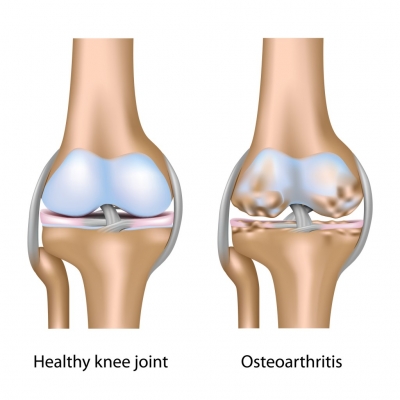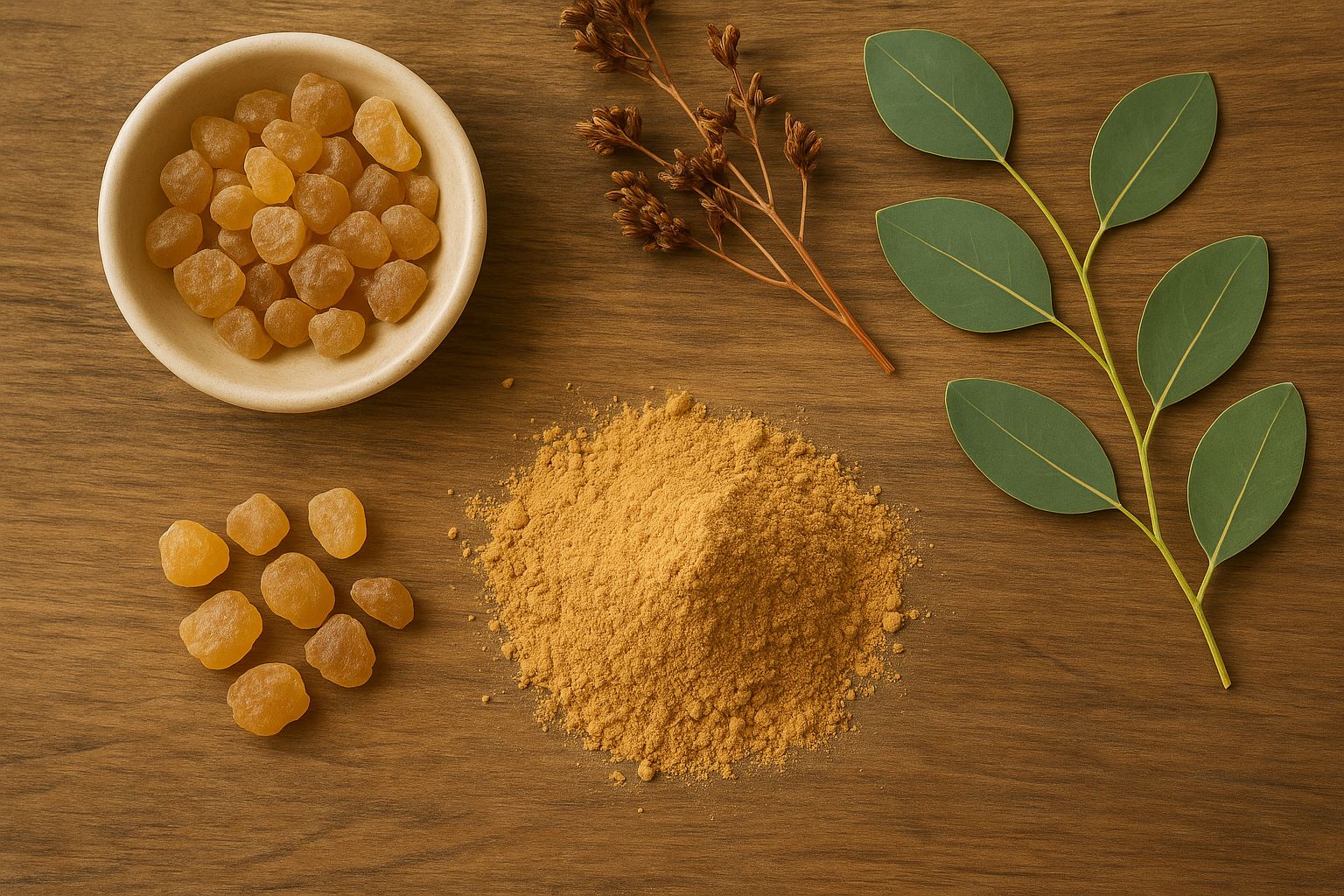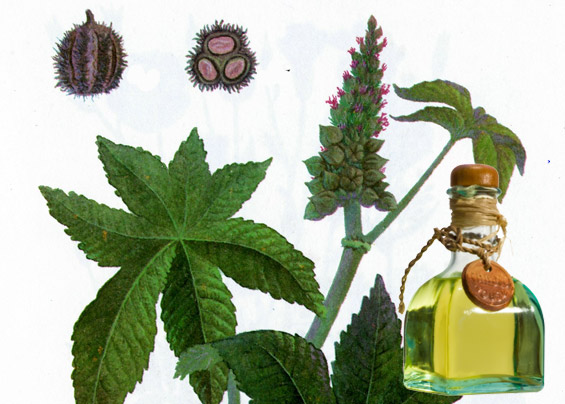What is osteoarthritis?
The word arthritis comes from the Greek "Arthro-" which means joint, and,-ose "or" osis "meaning illness, disease. Here we are talking about lesions in one or more joints that do not always begin with cartilage damage and are not primarily induced by inflammation. There are many factors that cause or favor damaging of the cartilage. In the beginning it often encompasses incorrect burdening of a particular joint or its overload. However, congenital defects and accidents can also lead to premature wear-out of the cartilage. Being as the process, once started, without treatment continually progresses, we have as a consequence total diminishing of the cartilage layer and deformation of the bone situated beneath that cartilage, as well as changes to the mucosa which the joint is lined with.
These processes are usually associated with visible deformations to the joint, severe pain and declining joint mobility, going as far as complete stiffness. The risk of arthrosis increases with age. However, due to lifestyle changes, even young and very young people are now increasingly affected with arthrotic changes in the joints.
The causes of osteoarthritis may include:
- genetically conditioned poorer quality of cartilage
- innate or acquired distortion
- bones not healed properly after a fracture or wrong distibution or weight or overloading
- accident or injury with damage to the cartilage (often unnoticed)
- excessive weight (especially to the supporting joints of the spine, hip, knee and foot)
- wrong or inadequate diet
- metabolic disorders
- lack of physical activity
Osteoarthritis develops in stages
Of course that such a finely designed system such as the joint is also very sensitive. Sometimes even a small shift in the joint axis is enough to lead to long-term changes in the load on the cartilage and its recovery. Such a discrepancy sooner or later leads to premature and increased wear of the cartilage tissue in the areas suffering the loas, which is then gradually extended to the entire joint.
It typically begins just with the softening of the cartilage, which however with that becomes more susceptible, so it therefore becomes gradually rougher in these areas: small cracks may appear and it is easily worn out by friction. Such damage to the cartilage, initially still strictly confined to the surface layer, represents the beginning of arthrosis. As a reaction to the thinning of the cartilage layer, the bone situated underneath the cartilage gradually thickens and begins to create the so-called osteophytes (bone growths on the edges). In this middle stage of arthrosis the cartilage begins to show a deeper craters and ravines, and gradually leads to nodular thickening and deformity of the joint. These bone formations, when touched while the joint is in motion, can cause pain, or increase already existing pain.
The later stage of arthrosis occurs when the cartilage layer is increasingly worn out, until it disappears completely - that is the so-called. exposing of the cartilage - the joint line is no longer existant, and the joint bone continually hits the bone it's connected to. The cartilaginous material in the joint acts like sand in an engine. In an effort to cleanse the joint of those fragments made by friction, the joint membrane easily becomes inflamed. This is called activated arthrosis. The inflamed joint membrane is no longer able to produce joint fluid rich in nutrients. In this way, the conditions for nourishing the cartilage are even further worsened. Sufferers in these cases reported that their joint hurts more, they feel an increase in temperature in the joint and there is redness, and there is considerable swelling reported, because of the spills. Mobility may be completely impossible due to pain. These inflammatory phases often alternate with non-inflammatory phases. During periods of inactive arthrosis pain may reduce significantly, although mobility is generally severely limited. In particular, motions included in complete bending and stretching are often no longer possible. The transitions from early to late stage arthrosis vary. Sometimes this process takes place fairly quickly and complete damage to the joint occurs very soon. In other cases, however, several years may pass until the surface cartilage damage leads to the last stage of arthrosis.
Can I notice that I have arthrosis?
Typically, early stages of arthrosis do not show any symptoms, because the cartilage is not connected to the nerves, and the signal concerning damage is not able to reach the brain. Symptoms, i.e. pain, do not become more noticable until the point when the bone itself becomes part of the process. There are occuring inflammatory changes or locking up and the pain in the muscle that surrounds the joint. This leads to the typical pain that occurs after a longer phase of resting; the first movements in the morning upon waking up are especially painful. Since this sense of "rustiness" usually quickly disappears again, it is not looked upon as anything serious in the beginning.
The variable flow in which the phases with and without symptoms alternate is typical of the first stages of arthrosis. Sufferers feel stronger pain in wet and cold weather. They, on the other hand, experience the sun and warmth as alleviations. They sometimes feel pain while doing physical work and experiencing load on the joints, as all too familiar to people with osteoarthritis of the knee while climbing up and down stairs. In some cases, arthrosis is indicated by the appearance of noises in the knee, such as squeaks and cracking while moving. As the condition progresses, so the pain becomes more frequent and stronger. Each movement of the affected joint becomes tormentuous and forces the sufferer to occupy certain positions in which they will be able to rest. However, with that they unfortunately spiral the progression of the condition even more.
Later stages are characteristic in that that the pain occurrs even during rest, and the joint is significantly limited in its mobility and range of movement. In the final stage, when the corresponding bones get extremely close to each other, the joint becomes quite rigid and the primary function of the joint bonding does not exist anymore. At this stage, although the pain has stopped, movement is no longer possible. There is in fact no strict correlation between the extent of anatomical changes and the degree of pain. Sometimes there are occurances of characteristic changes that can clearly be confirmed with an X-ray image - without the patients feeling any pain. There are also, however, cases in which the patients complain of severe pain, without the adequate characteristic changes being able to be confirmed.
When to seek a doctor?
- experiencing pain in the joints, and if these pains occur only in stages
- experiencing pain or stiffness occuring in the morning after a longer stage of rest
- feeling tension in the joint
- hearing squeaking or grinding noises in the joint
- less strength in the joint
- experiencing reduced mobility and locking up in the muscles
- your joint is swelling
- your joint is changing shape
Source: Excerpt from the book by M. Krieger, "Arthrosis-Causes, Treatment and diagnosis"







